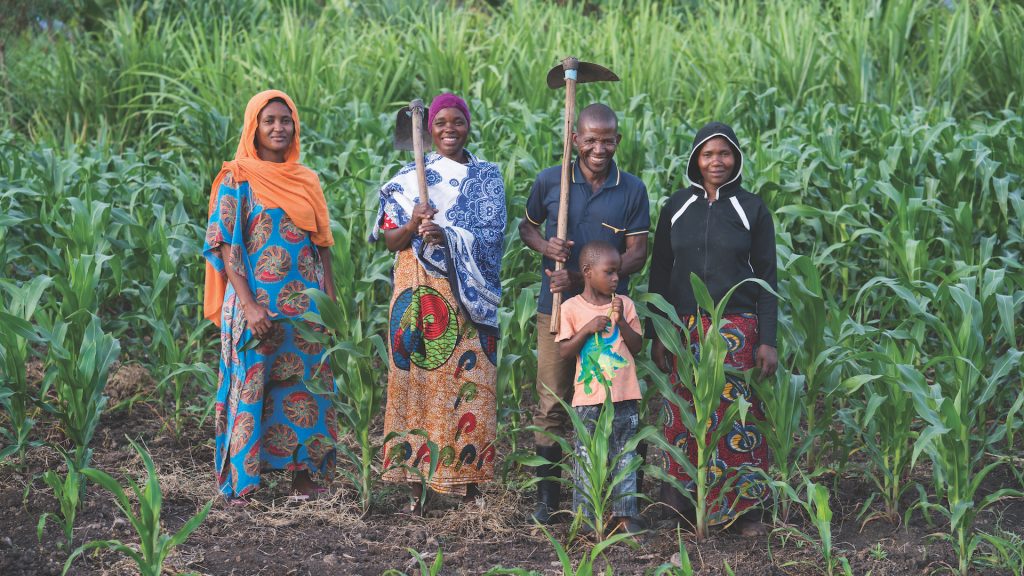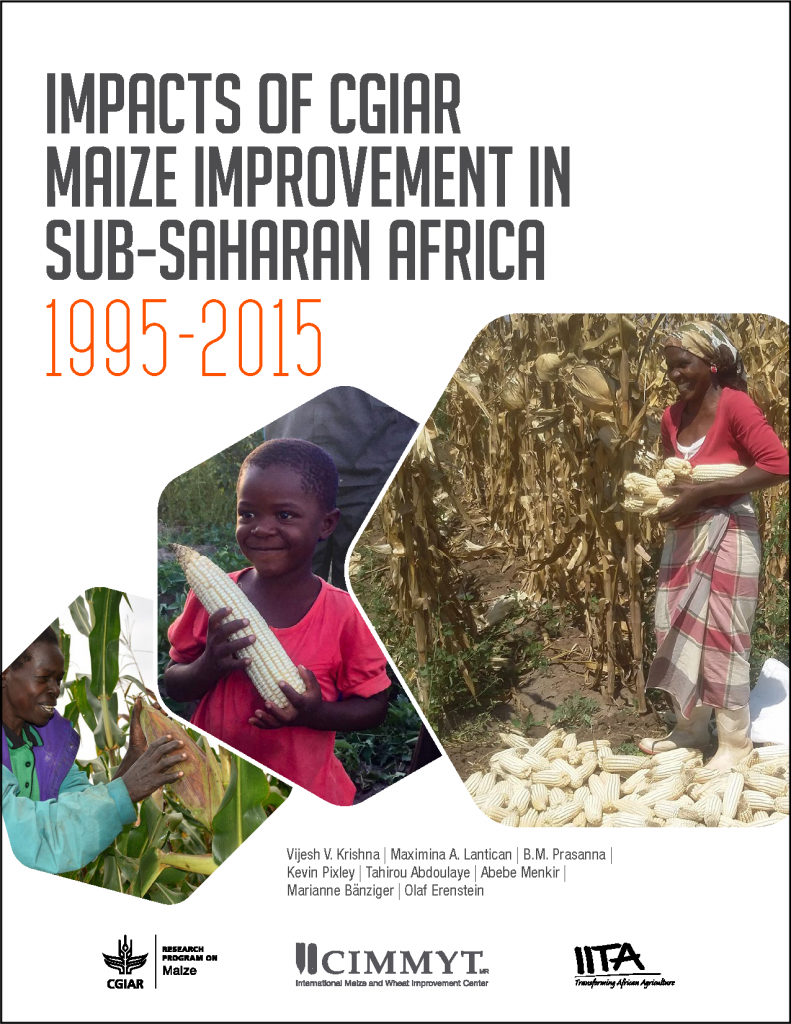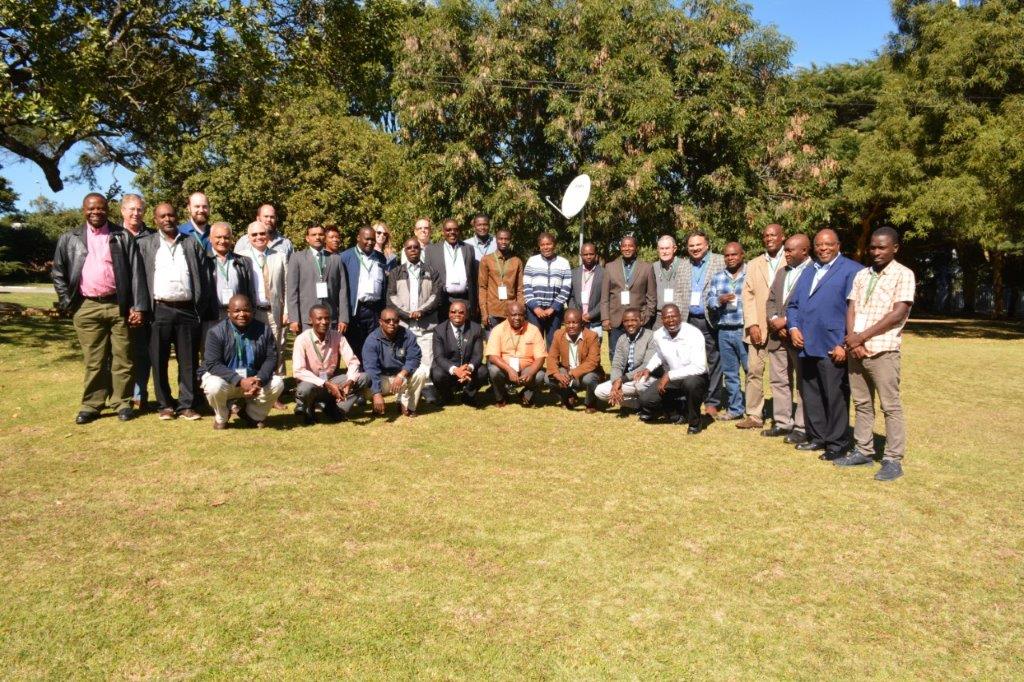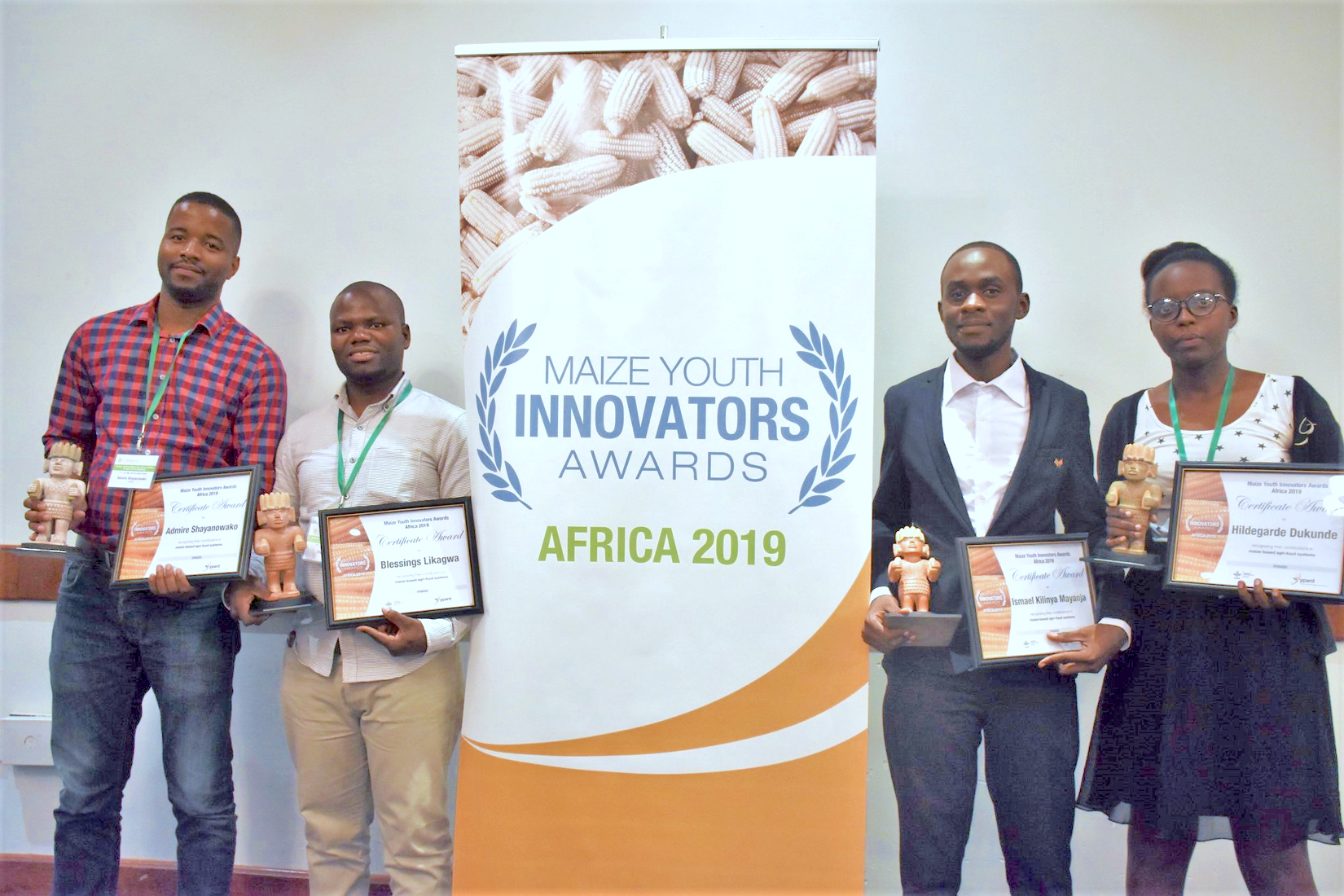
Between 1995-2015, nearly 60% of all maize varieties released in 18 African countries were CGIAR-related. At the end of this period, in 2015, almost half of the maize area in these countries grew CGIAR-related maize varieties. All that was accomplished through modest, maximum yearly investment of about $30 million, which showed high returns: in 2015, the aggregate yearly economic benefits for using CGIAR-related maize varieties released after 1994 were estimated to be between $660 million and $1.05 billion.
These are just some of the key findings of Impacts of CGIAR Maize Improvement in sub-Saharan Africa, 1995-2015 a new, comprehensive review of the two decades of longstanding, CGIAR-led work on improved maize for Africa.
Since its introduction to Africa in the 16th century, maize has become one of the most important food crops in the continent.
It accounts for almost a third of the calories consumed in sub-Saharan Africa. And it’s grown on over 38 million hectares in the region, mostly by rainfall-dependent smallholder farmers.
Climate change poses an existential threat to the millions who depend on the crop for their livelihood or for their next meal. Already 65% of the maize growing areas in sub-Saharan Africa face some level of drought stress.
Long-term commitment
Through the International Maize and Wheat Improvement Center (CIMMYT) and the International Institute of Tropical Agriculture (IITA), CGIAR has been working alongside countless regional partners since 1980s to develop and deploy climate-smart maize varieties in Africa.
This work builds on various investments including Drought-Tolerant Maize for Africa (DTMA) and Stress Tolerant Maize for Africa (STMA). Support for this game-changing work has generated massive impacts for smallholder farmers, maize consumers, and seed markets in the region. Throughout, the determination to strengthen the climate resilience of maize agri-food systems in Africa has remained the same.
To understand the impact of their work — and how to build on it in the coming years — researchers at CIMMYT and IITA took a deep dive into two decades’ worth of this work across 18 countries in sub-Saharan Africa. These findings add to our understanding of the impact of work that today benefits an estimated 8.6 million farmers in the region.
Big challenges remain. But with the right partnerships, know-how and resources we can have an outsize impact on meeting those challenges head on.

 Climate adaptation and mitigation
Climate adaptation and mitigation 
